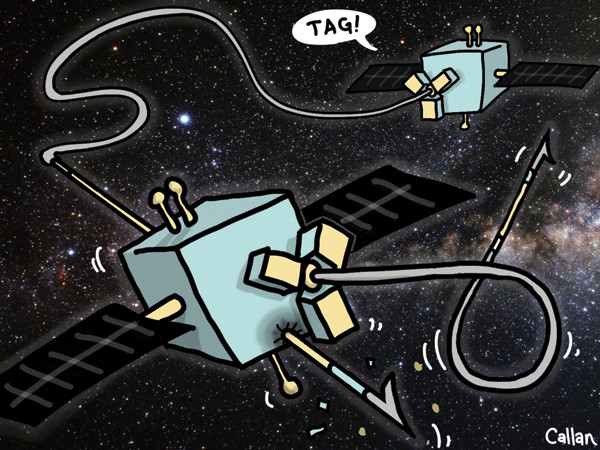
by Allison Mills Sunday, October 5, 2014

Credit: Callan Bentley.
Harpooning was first used to spear fish, and later whales, but has yet to be used in space. Now, the European Space Agency (ESA) is considering the ancient technique to capture rogue satellites interfering with important orbits.
ESA’s basic design is similar to a whaler’s harpoon — a long thin pole with a barbed head — as is the method, which relies on hitting a target, piercing it and reeling it back. One big difference is the harpooner: ESA is hoping for a fully automated system to be launched as a part of ESA’s Clean Space initiative and the e.DeOrbit mission in 2021. Airbus Defence and Space based in England has drawn up a conceptual design.
Harpooning isn’t the only method being considered to clean up orbits around Earth. Netting, robotic arms and clamps have been proposed to help clear out more than 17,000 objects spinning through the skies. Some are no bigger than a coffee cup, but ESA notes that a 1-centimeter-wide nut can hit a satellite with the force of a hand grenade. And they consider it only a matter of time before a larger collision occurs, which could set off a domino effect causing further breakups and creating a more hazardous debris cloud.
© 2008-2021. All rights reserved. Any copying, redistribution or retransmission of any of the contents of this service without the expressed written permission of the American Geosciences Institute is expressly prohibited. Click here for all copyright requests.